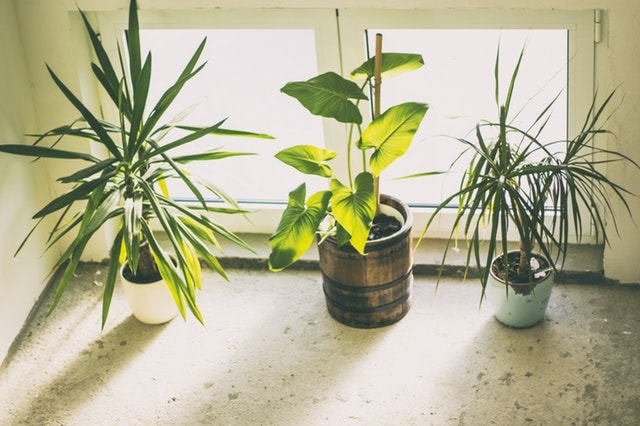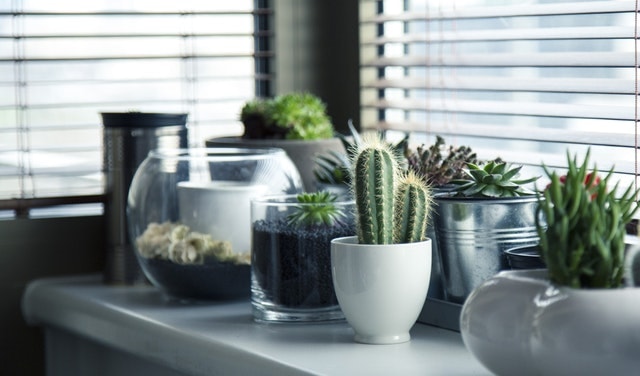Creating a charming cottage garden doesn’t mean you have to spend countless hours maintaining it. With the right selection of plants, clever design choices, and a low-maintenance approach, you can achieve a beautiful and relaxing outdoor space that requires minimal effort. In this listicle, we present 20 low-maintenance cottage garden ideas to help you create a stunning and hassle-free garden paradise.
1. Choose native plants:
Opt for native plants that are naturally adapted to your region’s climate conditions. They require less water, fertilizer, and overall maintenance, making them ideal for a low-maintenance cottage garden. They offer a range of colors, sizes, and textures, allowing homeowners to create a stunning and whimsical landscape.
Native cottage garden plants are also adapted to the local climate and soil conditions, making them easy to care for and maintain. These plants attract pollinators such as butterflies and bees, adding life and movement to the garden.
Whether used as borders, fillers, or focal points, native cottage garden plants provide a natural and inviting atmosphere, perfect for relaxing and enjoying the beauty of nature.
2. Incorporate perennial flowers:
Include a variety of perennial flowers that come back year after year. These plants require less replanting and offer long-lasting beauty with minimal maintenance.
Cottage gardens are renowned for their charming and nostalgic appeal, and perennial flowers play a significant role in achieving this delightful aesthetic. These long-lived plants are the backbone of any cottage garden, adding vibrant colors and enchanting fragrances year after year.
With their ability to withstand harsh weather conditions and thrive in various climates, perennials are an ideal choice for gardeners seeking a low-maintenance yet captivating display.
One of the most beloved perennial flowers in a cottage garden is the classic rose. With its timeless beauty and intoxicating scent, roses effortlessly evoke a romantic atmosphere.
Varieties such as English roses, climbers, and ramblers can be trained along trellises, arbors, or fences to create stunning vertical displays. Their blossoms range from soft pastels to rich, deep hues, making them a versatile choice for cottage gardeners looking to add a touch of elegance to their outdoor space.
Another popular choice among cottage gardeners is the vibrant and resilient lavender. Known for its striking purple flowers and distinct fragrance, lavender is a staple in cottage gardens across the world. Its compact, bushy form makes it perfect for borders, while its ability to attract pollinators such as bees and butterflies adds an extra ecological benefit to the garden.
With proper care and pruning, lavender can bloom for years, providing a visually appealing and fragrant addition to the cottage garden.
3. Plant in groupings:
Arrange plants in clusters instead of scattering them throughout the garden. This not only creates a visually appealing look but also makes maintenance easier by reducing the number of individual plants to care for.
4. Use self-seeding plants:
Introduce self-seeding plants like foxgloves, forget-me-nots, or poppies. These plants will scatter their seeds, allowing them to grow naturally without any effort on your part.
With their undeniably whimsical and romantic presence, they effortlessly add character and vibrancy to any garden space. Self-seeders are nature’s way of providing an ongoing supply of beautiful flowers and foliage, ensuring that the garden remains visually stunning and full of surprises year after year.
One of the most delightful aspects of self-seeding plants is their low maintenance nature. Once established, these plants require minimal care and attention, allowing gardeners to sit back and enjoy the spontaneous beauty they bring.
As these plants freely scatter their seeds, new seedlings emerge throughout the garden, creating a delightful tapestry of color and texture. From delicate annuals to perennial favorites, self-seeding plants offer a diverse array of options for garden enthusiasts.
Their ability to colonize empty spaces and fill gaps ensures that the cottage garden always appears lush and full, even in areas where other plants may struggle. The resulting variety of heights, shapes, and colors adds a sense of spontaneity and enchantment to the overall design.
5. Install a mulch layer:
Applying a layer of mulch around plants helps retain moisture, controls weeds, and keeps the soil cool. This will reduce the need for watering and weeding, making your garden low maintenance.
6. Opt for low-care ground covers:
Select ground covers such as creeping thyme or creeping phlox that require minimal attention while providing a lush, carpet-like appearance to your garden.
One popular choice for a cottage garden ground cover is creeping thyme (Thymus serpyllum). This aromatic herb creates a stunning tapestry of pink, purple, or white flowers on a dense mat of foliage.
It thrives in full sun and well-drained soil, making it an ideal choice for rock gardens or pathways. Creeping thyme is drought-tolerant once established and can handle foot traffic, releasing its fragrant scent with every step.
For a splash of vibrant color, consider using creeping phlox (Phlox subulata) as a ground cover in your cottage garden. This perennial produces a profusion of small, star-shaped flowers in shades of pink, purple, white, or blue.
Creeping phlox thrives in sunny areas with well-draining soil and provides an excellent ground cover for slopes, rock walls, or borders. With its ability to cascade down slopes and spread vigorously, this low-growing plant will add a burst of visual interest to any garden.
Another versatile ground cover for a cottage garden is the hardy geranium (Geranium spp.). These perennials, also known as cranesbills, offer a wide range of flower colors and leaf shapes, making them a popular choice among gardeners.
Hardy geraniums prefer well-drained soil and can tolerate both sun and partial shade conditions. Their spreading habit makes them useful for covering large areas, and many varieties produce charming blooms throughout the summer.
In addition to their beauty, ground covers like Irish moss (Sagina subulata) or baby’s tears (Soleirolia soleirolii) can add a touch of whimsical charm to your cottage garden. These delicate, low-growing plants feature dense carpets of tiny leaves that create a lush, moss-like appearance.
Irish moss thrives in partial shade and moist, well-drained soil, making it an ideal choice for areas with dappled sunlight or along pathways. Baby’s tears, on the other hand, prefer bright, indirect light and consistent moisture, making them perfect for container gardens or shaded areas.
To help you choose the right ground cover for your cottage garden, refer to the table below.
| Ground Cover | Light Requirements | Soil Type | Height |
|---|---|---|---|
| Creeping Thyme | Full sun | Well-drained | 2-4 inches |
| Creeping Phlox | Full sun | Well-drained | 4-6 inches |
| Hardy Geranium | Sun to part shade | Well-drained | 8-16 inches |
| Irish Moss | Partial shade | Moist, well-drained | 1 inch |
| Baby’s Tears | Bright, indirect | Moist | 1-3 inches |
7. Incorporate dwarf or compact plants:
Choose dwarf or compact varieties of shrubs and trees. These plants stay smaller in size, requiring less pruning and maintenance.
These plants often have an extended blooming period, making them a wonderful addition to cottage gardens. Their ability to produce an abundance of vibrant flowers or interesting foliage ensures that there is always something eye-catching to admire.
Their smaller stature allows for intermingling with taller and more upright plants, creating a delightful tapestry of textures, colors, and heights. They can be used as underplanting for shrubs or taller perennials, providing a harmonious blend that adds depth and interest to the garden.
8. Install drip irrigation:
Consider using a drip irrigation system instead of sprinklers. Drip irrigation delivers water directly to the plant’s root zone, reducing water waste and the need for constant watering.
9. Create winding pathways:
Design meandering pathways through your garden using materials like gravel, mulch, or stepping stones. This adds charm and provides easy access for maintenance without trampling on plants.
10. Install raised beds:
Raised beds offer less bending and are easier to maintain. Construct raised beds and fill them with a mix of quality soil and compost for healthy plant growth.
11. Include evergreen plants:
Incorporate evergreen plants into your cottage garden to provide year-round color and structure. They require minimal pruning and provide a vibrant backdrop to other plants.
12. Choose low maintenance climbers:
Opt for low maintenance climbing plants like clematis or climbing roses. These plants can make use of vertical space, adding visual interest with minimal effort.
Clematis ‘Nelly Moser,’ which offers stunning pink flowers and can tolerate a range of soil conditions. Climbing rose ‘Golden Showers,’ famous for its vibrant yellow blooms and disease-resistant nature.
These climbers not only enhance the cottage garden aesthetic but also provide a visually appealing backdrop without demanding too much attention or effort.
13. Consider an automatic irrigation system:
Investing in an automatic irrigation system can save time and ensure that your plants receive adequate water on a consistent basis. This eliminates the need for regular hand-watering.
14. Reduce the lawn area:
Minimize lawn areas and replace them with low-maintenance alternatives such as ground covers, wildflowers, or paved areas. This reduces the need for mowing and watering.
15. Add a seating area:
Create a cozy seating area amongst your cottage garden to sit back, relax, and enjoy the beauty of your low maintenance oasis. Choose durable and weather-resistant furniture to minimize maintenance.
16. Choose flowering fruit trees:
Incorporate low maintenance flowering fruit trees like dwarf apple or cherry trees. They provide blossoms in the spring and delicious fruits without demanding extensive care.
These trees not only serve as a stunning focal point but also contribute to the overall health and vibrancy of the garden ecosystem.
17. Use decorative pots and containers:
To add interest to your garden with minimal work, place decorative pots and containers filled with low-maintenance plants strategically around your cottage garden.
From rustic terracotta pots for a traditional cottage vibe to sleek and modern containers for a contemporary twist, the options are endless. Mix and match different pot styles to create a visually dynamic and eclectic look or stick to a cohesive theme to maintain a sense of harmony.
By using pots, you have the freedom to experiment with different plant arrangements and layouts, allowing you to easily change the scenery whenever you desire. They also offer the flexibility to move your plants around to take advantage of the best sunlight or protect them from harsh weather conditions.
This adaptability is especially useful for those with limited garden space or for renters who want to create a beautiful garden without making permanent changes to their outdoor area.
18. Implement weed barriers:
Install weed barriers, such as landscape fabric or cardboard, beneath garden beds and pathways to suppress weed growth. This saves time spent on weeding and keeps your garden tidy.
19. Create wildlife-friendly features:
Encourage biodiversity in your low maintenance garden by adding bird feeders, butterfly-friendly flowers, or a wildlife pond. This creates a vibrant ecosystem while requiring minimal upkeep.
20. Embrace natural aesthetics:
Finally, embrace the natural aesthetics of a cottage garden. Allow plants to grow in their own unique way, and embrace a slightly wild and informal appearance. This not only reduces maintenance but adds to the charm of your outdoor space.
Conclusion:
Creating a stunning and low maintenance cottage garden is entirely achievable by making thoughtful plant selections, incorporating smart design choices, and implementing low effort maintenance strategies. Follow these 20 ideas and transform your outdoor space into a flourishing haven that requires minimal upkeep, allowing you to spend more time enjoying its beauty.
MORE POSTS:
15 Best Potted Plants for a Shaded Porch



